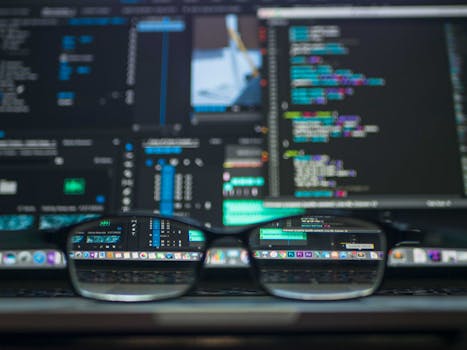Unlock Data: Convert Image to Table Instantly with an AI Tool
Introduction
Ever stared at a scanned document, a screenshot of a spreadsheet, or even a photograph of a table, wishing you could magically extract that data into a usable format? You’re not alone. Manually retyping information from images is a tedious, time-consuming, and error-prone process. But what if there was a way to convert image to table instantly, accurately, and with minimal effort? That’s where the power of Artificial Intelligence steps in.
In this post, we’re going to dive deep into the exciting world of AI-powered solutions that allow you to convert image to table ai tool efficiently. We’ll explore how these tools work, the incredible benefits they offer, real-world scenarios where they shine, and the pros and cons to consider. Get ready to unlock the hidden data within your images and transform your workflow!
Section 1 – The Magic Behind Converting Images to Tables
So, how exactly does a tool convert image to table? It’s not magic, though it often feels like it! At its core, the process relies on advanced Optical Character Recognition (OCR) and AI algorithms.
Think about it: an image is just a collection of pixels. To understand it as a table, a computer needs to identify rows, columns, cells, and the text within those cells. Traditional OCR technology has been around for a while, primarily for converting scanned text documents into editable text. However, extracting structured data from tables within images presented a significant challenge.
This is where AI, particularly machine learning and deep learning, has revolutionized the game. These intelligent systems are trained on massive datasets of images containing tables in various formats, fonts, and conditions. Through this training, they learn to:
Recognize visual patterns that define table structures.
Identify borders and cell boundaries, even when they’re faint or implied.
Accurately read text within cells, regardless of font style, size, or image quality.
Understand context to distinguish between headers, data entries, and other elements.
When you upload an image to an AI tool designed to convert image to table, it doesn’t just see pixels; it sees structure. It’s like a highly trained data analyst examining your image and saying, “Ah, this is a table! Let me organize this for you.” The output is typically a structured format like CSV, Excel, or JSON, ready for immediate use in spreadsheets, databases, or other analytical software. This ability to convert image to table ai tool is a game-changer for data management.

Section 2 – Deep Dive: Transforming Your Data Workflow
The ability to convert image to table isn’t just a neat trick; it’s a powerful productivity enhancer. Let’s break down the key benefits and tips for leveraging these AI tools effectively.
Here’s how you can make the most of an AI tool to convert image to table:
Boost Efficiency: Say goodbye to manual data entry! Tools that convert image to table can process complex tables in seconds, saving you hours of painstaking work. This frees up valuable time for more strategic tasks.
Improve Accuracy: Human error is inevitable during manual transcription. AI-powered OCR is remarkably accurate, significantly reducing the chances of typos or missed data points when you convert image to table.
Handle Diverse Formats: Whether it’s a PDF scan, a photograph, a PNG, or a JPG, modern AI tools can typically handle a wide range of image formats. This flexibility is crucial for processing data from various sources.
Extract Data from Legacy Documents: Many organizations have crucial information locked away in old scanned reports or archives. An AI tool to convert image to table can unlock this valuable historical data.
Streamline Data Analysis: Once your image data is in a tabular format, you can easily import it into your favorite analytics tools (like Excel, Google Sheets, or specialized business intelligence software) for analysis, reporting, and visualization.
Reduce Costs: By automating the data extraction process, you can reduce the need for manual labor, leading to significant cost savings, especially for large-scale data conversion projects where you need to convert image to table regularly.
Tips for Optimal Results:
Start with Clear Images: The clearer the image, the better the results. Ensure the text is legible and the table structure is well-defined.
Adjust Image Quality if Needed: Before uploading, consider using basic image editing tools to enhance contrast, sharpen text, or correct skewed angles.
Understand Tool Capabilities: Some AI tools excel at specific types of tables (e.g., simple grids vs. complex, merged cells). Familiarize yourself with what your chosen tool handles best.
Review and Verify: While AI is powerful, it’s always a good practice to quickly review the converted table for any minor discrepancies, especially for critical data.
Look for Formatting Options: When you convert image to table, see if the tool offers options to preserve or adjust formatting, like bold text or specific number formats.

Section 3 – Real-World Applications: Where AI to Convert Image to Table Shines
The versatility of an AI tool to convert image to table makes it invaluable across numerous industries and scenarios. Let’s explore some common use cases:
1. Accounting and Finance:
Imagine receiving invoices or receipts as images. Manually entering line items, amounts, and dates into accounting software is a nightmare. An AI tool can convert image to table from these documents, automatically populating fields and saving accountants countless hours. This also extends to bank statements, financial reports, and balance sheets captured as images.
2. Research and Academia:
Researchers often work with scanned academic papers, survey results presented in tables, or historical data logs. The ability to convert image to table allows them to quickly digitize and analyze large volumes of information, accelerating their research process. For instance, a history student might need to extract census data from old scanned documents.
3. Healthcare:
Patient records, lab results, and prescription information can sometimes be found in scanned documents or even handwritten notes. While HIPAA compliance is paramount, AI tools can assist in digitizing structured information from these sources, making it more accessible for authorized personnel. This is particularly helpful when needing to convert image to table from legacy medical archives.
4. Legal Services:
Law firms deal with vast amounts of documentation, including contracts, court filings, and evidence presented in tabular form. An AI tool to convert image to table can help lawyers extract key clauses, dates, and parties from scanned legal documents, improving efficiency in case preparation.
5. E-commerce and Retail:
Retailers might receive product catalogs, supplier price lists, or order forms as images. Converting these into a structured, digital format allows for easier inventory management, price comparisons, and order processing.
6. Government and Public Sector:
Public records, census data, and statistical reports are often archived as scanned documents. Government agencies can use AI to convert image to table to make this information more accessible and analyzable for public use and internal operations.
Example Scenario: Processing Restaurant Receipts
Let’s say you’re a small business owner who needs to track expenses. You’ve collected a stack of restaurant receipts from business lunches. Instead of manually entering each item, date, and amount into your expense tracker:
1. You take clear photos of each receipt.
2. You upload these photos to an AI tool that can convert image to table.
3. The tool identifies the table-like structure on each receipt, extracts the vendor name, date, total amount, and even individual line items if the receipt is clear enough.
4. It outputs this data into a CSV file.
5. You then import this CSV into your accounting software or a simple spreadsheet, categorizing your expenses in minutes rather than hours.
This is a perfect illustration of how a sophisticated AI tool can convert image to table and drastically improve a common business task. For more advanced data manipulation tips, you might find our Essential Excel Formulas for Data Cleaning post helpful.

Pros and Cons of Using AI to Convert Image to Table
While the benefits are clear, it’s important to have a balanced perspective. Here’s a look at the advantages and disadvantages of relying on an AI tool to convert image to table:
| Pros | Cons |
|---|---|
| ➕ Significant time savings | ➖ Accuracy can vary with image quality |
| ➕ Reduced manual errors | ➖ May struggle with highly complex or handwritten tables |
| ➕ Handles various image formats | ➖ Potential cost associated with premium tools |
| ➕ Improved data accessibility and analysis | ➖ Requires reliable internet connection for cloud-based tools |
| ➕ Cost-effective for large-scale data conversion | ➖ Privacy concerns for highly sensitive documents if using untrusted services |
| ➕ Automates a repetitive and tedious task |
When evaluating a tool to convert image to table, consider these points to ensure it aligns with your needs and resources. Exploring free trials can be a great way to test the waters.
Conclusion
The days of tedious, manual data entry from image-based tables are rapidly coming to an end, thanks to the power of AI. The ability to convert image to table instantly is no longer a futuristic concept but a practical reality that can revolutionize how individuals and businesses handle data.
By leveraging intelligent OCR and machine learning, AI tools can accurately extract structured data from virtually any image, saving you immense amounts of time, reducing errors, and unlocking valuable information previously trapped in visual formats. Whether you’re an accountant, researcher, student, or business owner, integrating a tool that can convert image to table ai tool into your workflow will undoubtedly lead to increased efficiency and productivity.
Don’t let data remain locked away in static images. Explore the available AI solutions today and experience the transformation firsthand. Start by trying out a free online converter or a trial version of a dedicated software to see just how easy it is to convert image to table and unlock your data’s true potential!